By Paulina Backiel, Physiotherapist
Why do we get lower back pain in pregnancy?
This is a common question we get asked as physiotherapists. You are not alone – back pain affects over 50% of pregnant women, mostly taking place in the second and third trimester due to body changes. The best way to explain how your body changes is with a photo.
As you can see the spine changes significantly as the baby grows in your tummy. This creates different loads on your spine and strain on your muscles to keep the little one safe.

The most obvious change you can see in the photo is the increased curve of the spine from top to bottom. With an increase in weight at your breasts and baby in the tummy, this can cause extra stress on the body, especially your tissues and muscles that are trying to help the spine.
These are some changes you may experience during pregnancy:
-Breasts getting larger (heavier) so both the spine and spinal muscles have to compensate for the heavier front weight.
-Belly starting to grow and expanding the stomach muscles (abdominals) causing stomach muscles weaken (being stretched too much).
-Pelvis tilts forward to fit baby increasing the lower back curve resulting in compression on the spine/spinal nerves also known as sciatic pain.
-Center of gravity moves forward due to baby, causing us to put more weight backwards to be able to stand and not fall forwards.
-Due to the increased lower back curve, our muscles tighten to help hold us and may become sore.
How to help lower back pain in pregnancy?
Here are a few mobility exercises and one strengthening exercise that can help with lower back pain in pregnancy.
**Before starting any new exercise or stretch/mobility program, please consult with your physician and/or your treating physiotherapist. Every pregnancy is individualized and guidelines by your physician must be followed.
Stretch/Mobility
1.Knees side to side in semi-sitting position
-Start by placing a pillow behind your back so that you are not completely lying down but semi-sitting.
-Bend your knees and prop your feet flat on the ground.
-Now in a small gentle motion, move your knees side to side. The motion should be gentle and knees should never go all the way to the floor.
-If you feel your back is lifting from the ground you have moved the knees too far.
-Do this 3 sets x 8reps to relax the lower back, in modification you can use your hands to move your knees rather than muscles if you wish.
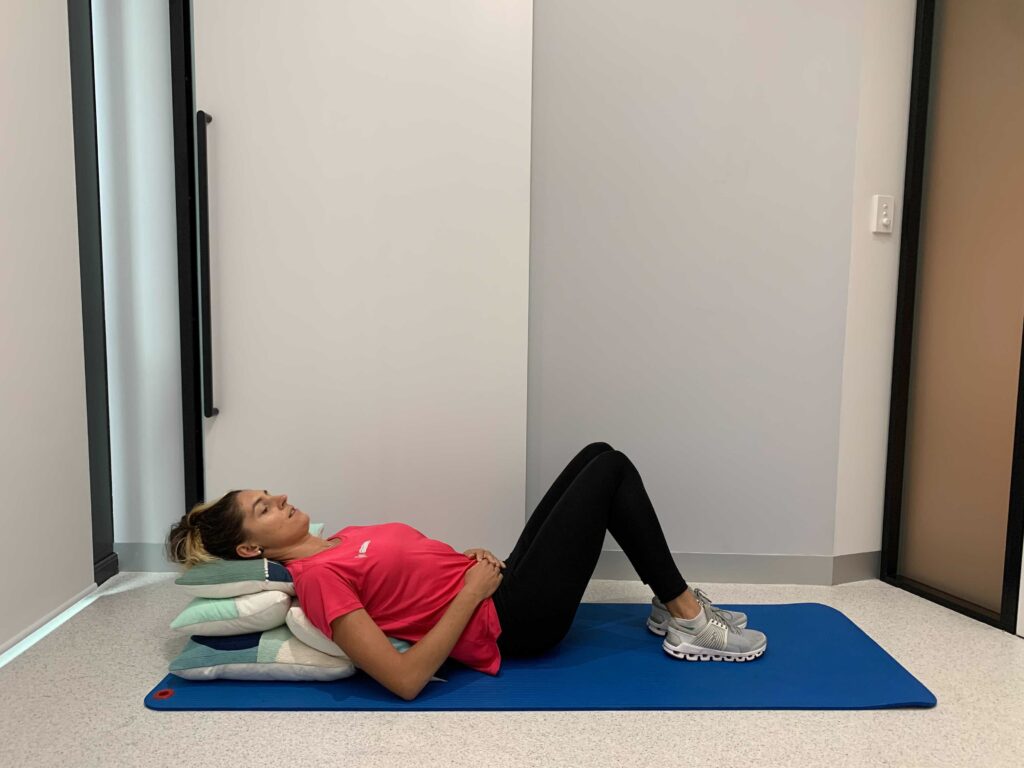


2.Pigeon pose standing
-Make sure you have a stable inclined surface such as a tall couch or chair/table that is secure.
-Bend your knee and place the outside of your thigh on the inclined surface.
-Lean into stretch for a stronger sensation – it should be felt in the front of stance leg and in the glutes (bum) of the leg on the incline.
-Hold for 45s-1min then do the other side. You may do up to 3 sets if you feel the need to.
Modification: If it is too difficult to keep your standing leg straight, just bend it!
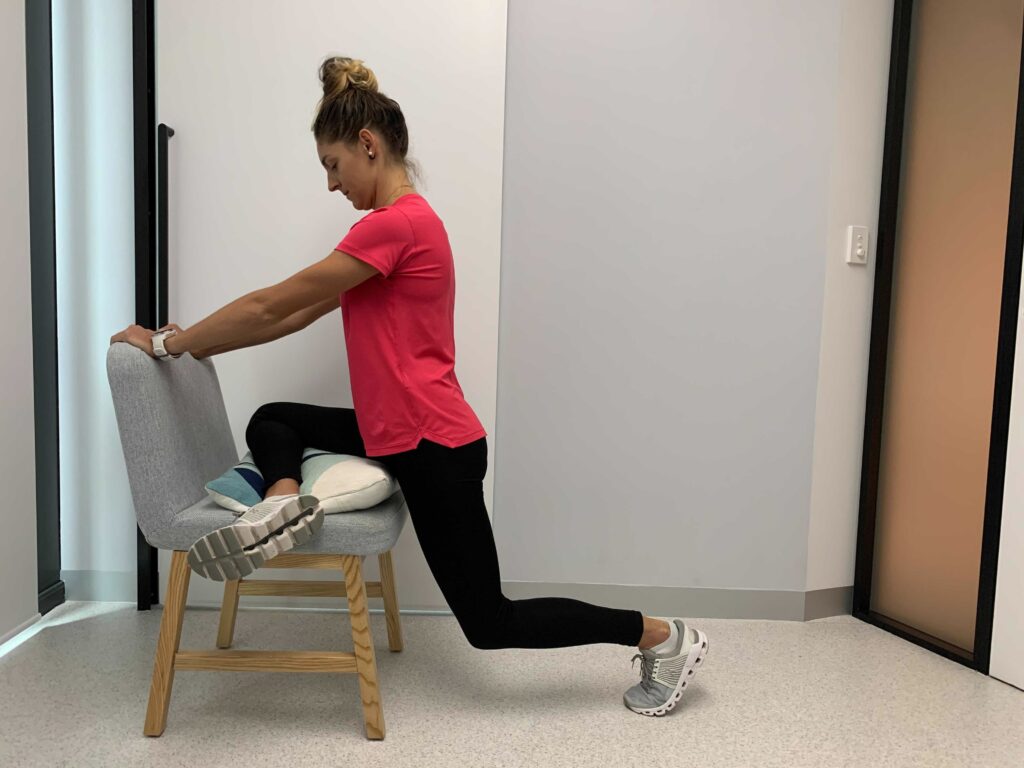

Exercises
1.Dog/Bird
-Start on all 4s in tabletop position, make sure your back is straight and turn on your core muscles.
-Now move opposite arm and opposite leg up to the sky maintaining a straight back with your core muscles contracted.
-Switch arms and legs.
-Do 3 sets x 10 reps.
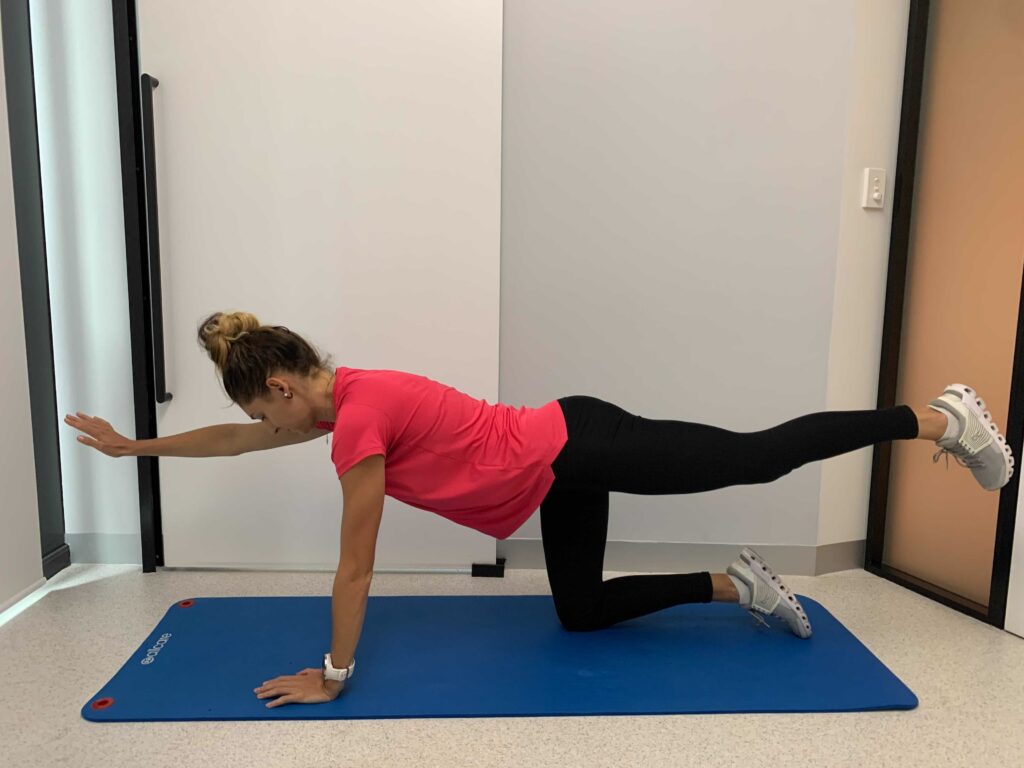
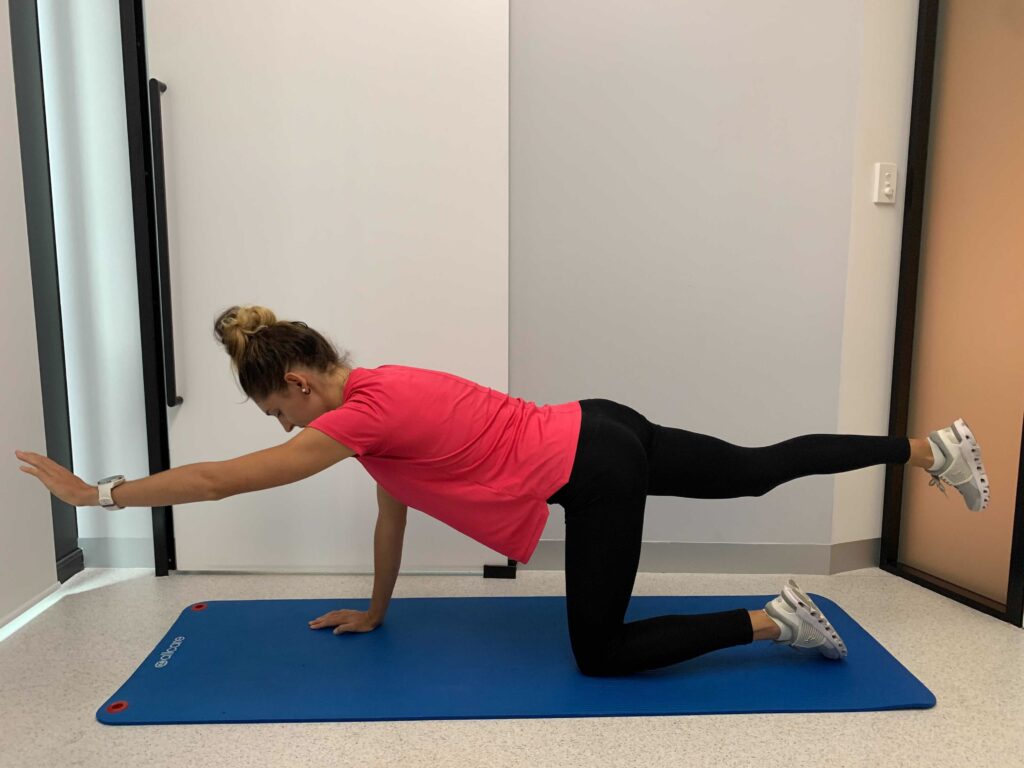
2.Inclined plank
-Make sure you have a stable inclined surface such as a tall couch or chair/table that is secure
-Place elbows on inclined surface and hold. Contract your core muscles.
-Do 3x30s with 20s rest between. If you are strong enough you can try 45s.
If you are experiencing ongoing discomfort during your pregnancy, a pregnancy massage can help. Book in HERE.
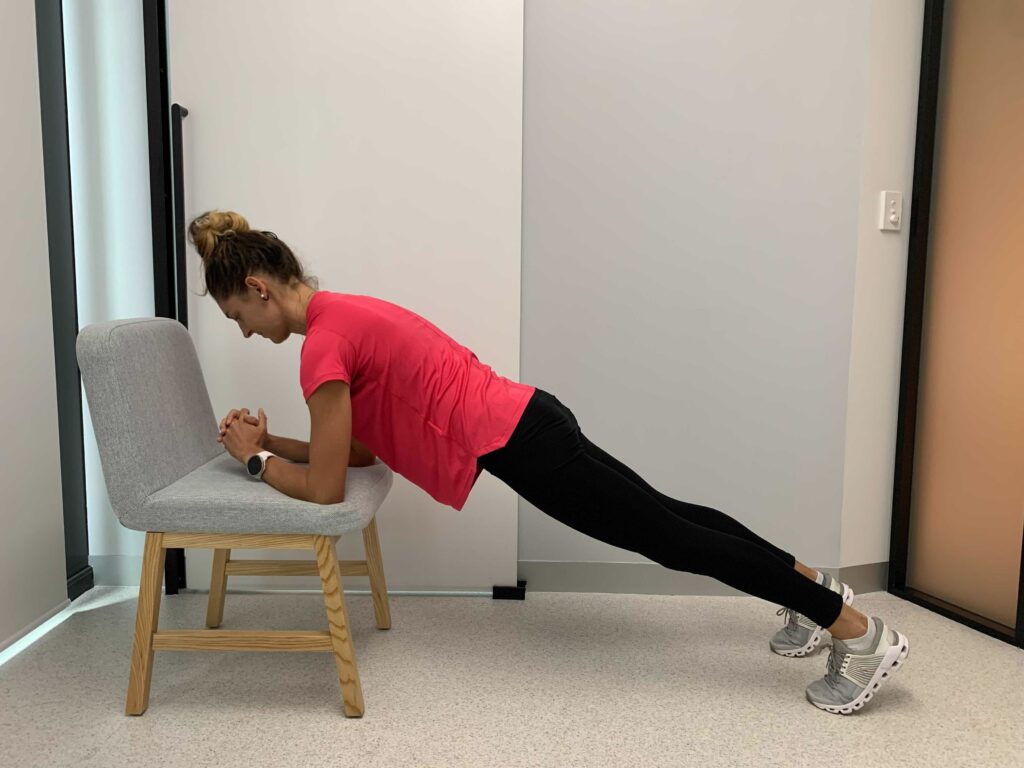
References
1(photo).https://medium.com/@lovingparents121/low-back-pain-in-pregnancy-e772197b0fa3
2.Schröder G, Kundt G, Otte M, Wendig D, Schober HC. Impact of pregnancy on back pain and body posture in women. J Phys Ther Sci. 2016;28(4):1199-1207. doi:10.1589/jpts.28.1199
3.Manyozo SD, Nesto T, Bonongwe P, Muula AS. Low back pain during pregnancy: Prevalence, risk factors and association with daily activities among pregnant women in urban Blantyre, Malawi. Malawi Med J. 2019;31(1):71-76. doi:10.4314/mmj.v31i1.12
4.https://www.spine-health.com/conditions/pregnancy-and-back-pain/back-pain-pregnancy

